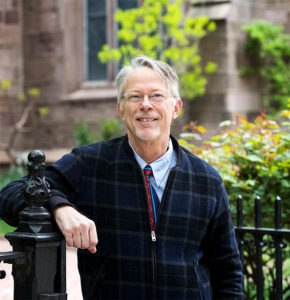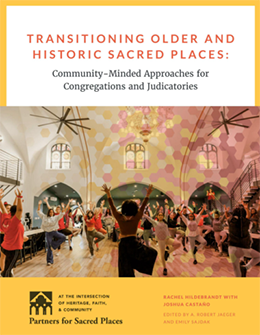
Chris Kendig Photography
IT’S BECOMING INCREASINGLY APPARENT to civic leaders across America that many of our congregations, especially in older urban and rural communities, have declined in size over the last several decades. Some, in time, will not be sustainable and their buildings—which provide a home for so much of the ministry and social infrastructure our communities depend upon—will be at risk. Some congregations will be compelled to close or merge and sell their buildings, dislocating the childcare centers, soup kitchens and homeless programs they have hosted for years. Sacred places with new owners may be reused in a way that continues to provide public benefit or community access. Others, however, will be gutted or demolished.
These changes represent a slowly unfolding community crisis, especially when some cities and neighborhoods may be losing a critical mass of community-serving sacred places.
 This crisis has prompted and informed Partners’ response, which has taken many forms, including—most recently—the publication of an important new guide: Transitioning Older and Historic Sacred Places: Community-Minded Approaches for Congregations and Judicatories. This practical resource offers guidance on the full range of options available to congregations that are ready to rethink the use and management of their building assets, including more intensive sharing of space; shared ownership with other congregations; staying in place under new ownership; or sale of the property.
This crisis has prompted and informed Partners’ response, which has taken many forms, including—most recently—the publication of an important new guide: Transitioning Older and Historic Sacred Places: Community-Minded Approaches for Congregations and Judicatories. This practical resource offers guidance on the full range of options available to congregations that are ready to rethink the use and management of their building assets, including more intensive sharing of space; shared ownership with other congregations; staying in place under new ownership; or sale of the property.
When religious buildings must be sold, our guide recommends a civic-minded process that brings congregations and communities together, encouraging new uses that maintain the public value of these sacred places, as well as steps to protect and preserve their character and cultural value.
The Guide comes out at a time when the media is publishing a flurry of articles and opinion pieces on closed/closing/vacant churches, and when policy journals are looking more closely at the vulnerability of sacred places. For example, in an article in Governing magazine by Rick Reinhard entitled “Churches are Closing. It’s a Challenge for Local Governments,” the author makes the case that the public sector has an important role to play: “It will fall to cities and counties to lead and guide the process of finding new and better uses for buildings that have long anchored communities and neighborhoods.”
Dr. David Kresta, who teaches courses on community economic development at Portland State University, led a recent convening that asked clergy to talk about reimagining religious spaces. And the Faith + Finance Assets in Transition Peer Group has been formed to convene nonprofit organizations that share a concern for sacred places transitioning in use and/or ownership. One of those organizations is Sympara, which has mapped the purpose and relationship of many nonprofits with shared interests, including Partners, suggesting that we occupy a key junction point in the ecosystem of organizations concerned about transitioning sacred places. In this ecosystem, Partners is considered to be all of the following:
Investor — via the National Fund for Sacred Places and our other grantmaking programs, as well as our capital campaign services which helps congregations maximize community support for repair and restoration projects.
Outfitter and Guide — via our New Dollars / New Partners training, Community Engagement consulting, publications and other resources.
Cultivator of the Commons — via our placemaking and asset-mapping work.
Activator of Space — via our space-matching work and our Arts in Sacred Places program, among other initiatives.
It’s my belief that Partners’ work to guide and support transitioning sacred places may be one of the most important developments in our history, and will help to mainstream Partners’ resources—and our goals and values—in new and important ways.
